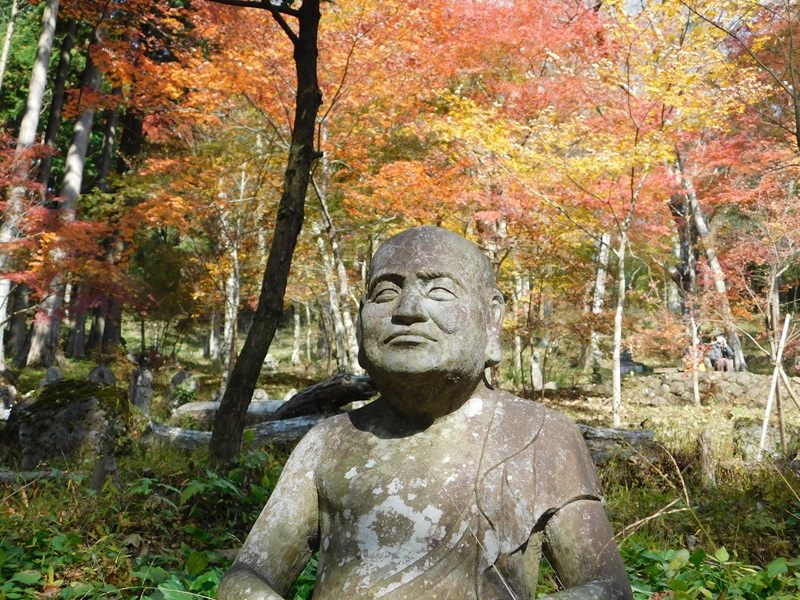どうせ勉強するなら仏教の教えを英語で勉強するのがおすすめです。
使うコンテンツはYoutubeで、お勧めに出てきて、たまたま見た動画です。
概要を見ても、どういう人が作ったのか、よくわかりませんので、内容の真偽や仏教との関連性もよくわかりません。とりあえず個人的に気に入っているのでご紹介します。
心の平穏(Inner peace)を得られる方法が、まとまっていると思います。
翻訳はClaude(生成AI)を使っています。一部しか載せていません。
こちら↓↓も参考にしてください。

- How to Stay Calm and Positive in Life | Buddhist Story
- Stop Being Soft to Everyone 全員に対して優しくしすぎないで
- THE POWER OF COMPASSION : Transform Your Life with Kindness and Empathy 思いやりの力:優しさと共感で人生を変える
- 10 Buddhist Story to Relax Your Mind おすすめ!
- 5 Buddhist Secrets to a Fulfilling Life Timeless Wisdom for Inner Peace and Happiness
- 仏教とは関係ないがモチベーションアップ
- その他おすすめ
How to Stay Calm and Positive in Life | Buddhist Story
Stay Positive – The Power of Positive Thinking前向きでいること – ポジティブシンキングの力
この章の個人的まとめです。
心が私たちの世界の見方を作っている。
過去にとらわれたり、先のことが心配になったときマインドフルネスの実施、つまり呼吸にすべての意識を集中して現在の瞬間に焦点を当て、自分が今の瞬間以外(過去の後悔や先の心配)のことを考えていることを把握する。そのうえで心をポジティブな方向にもっていくことを意識する。つまり息をしている以外は、自分の心が作り出した世界で、心の持ちよう(ポジティブに考える)で、どうにでも解釈できるということだと思います。
重要な部分だけ抜き出しました。
0:32The Buddha emphasized the significance of right thinking, encouraging followers to focus on the present moment rather than dwelling on the past or anxiously anticipating the future.
仏陀は正しい思考の重要性を強調し、過去にとらわれたり、不安に満ちた未来を予測したりするのではなく、現在の瞬間に焦点を当てることを信者たちに勧めました。
1:11The Buddha, a wise teacher, said that the mind is the master of everything – it shapes how we see the world. 賢明な教師である仏陀は、心がすべての主人であり、それが私たちの世界の見方を形作ると説きました。
2:29So how can you start practicing mindfulness? It’s simpler than you might think. Take a moment each day to pause and breathe. Close your eyes and feel the air filling your lungs, then slowly exhale. Let go of tension with each breath. Pay attention to the sensations in your body as you go about your day. Try to be fully present in whatever you’re doing, whether it’s washing dishes, walking, or talking to a friend. Give it your full attention. Notice the details that often go unnoticed.
では、どのようにしてマインドフルネスを実践し始めることができるでしょうか?思っているよりもシンプルです。毎日少しの時間を取って、立ち止まって呼吸をしましょう。目を閉じて、空気が肺に入っていくのを感じ、そしてゆっくりと吐き出します。呼吸とともに緊張を手放していきます。一日の中で体の感覚に注意を向けましょう。皿洗いでも、歩行でも、友人との会話でも、何をしているときも完全にその瞬間に存在するよう心がけます。
Be Thankful for Things – Embracing Gratitude in Everyday Life物事に感謝する – 日常生活で感謝の心を育む
この章の個人的まとめです。
なんにでも感謝することでポジティブで充実した人生への変化する。
*感謝することがなぜ、このような働きをするかについては詳しく述べられていませんが、ほかのYoutubeで調べたいと思います。
3:52Expressing gratitude is not merely a social nicety but a spiritual practice in Buddhism.
感謝の表現は単なる社交的な礼儀ではなく、仏教における精神的な実践なのです。
4:42When we’re thankful, we open our hearts to the abundance that already exists in our lives.
私たちが感謝するとき、すでに私たちの人生に存在する豊かさに心を開くのです。
In the busy hustle of daily life, it’s easy to overlook the small wonders that surround us – the warmth of sunlight, the gentle breeze, or the laughter of a friend. These are treasures often taken for granted. Gratitude invites us to pause and recognize the beauty in the ordinary.
日々の忙しない生活の中で、私たちを取り巻く小さな驚異 – 太陽の温もり、そよ風のやさしさ、友人の笑い声など – を見過ごしがちです。これらは当たり前とされがちな宝物です。感謝は、立ち止まって日常の中にある美しさに気づくよう私たちを導いてくれます。
5:11instead of dwelling on what you lack, focus on what you have. Take a moment each day to reflect on the things you’re grateful for. It could be as simple as a hot cup of tea, a kind gesture, or the roof over your head. The practice of keeping a gratitude journal is a wonderful way to make gratitude a daily habit. At the end of each day, write down three things you’re thankful for – it could be a loving family, good health, or the opportunity to learn something new. As you do this, you’ll find that your outlook on life begins to change.
欠けているものにとらわれるのではなく、持っているものに焦点を当てるのです。毎日少し時間を取って、感謝すべきことについて考えてみましょう。それは温かい一杯のお茶や、親切な仕草、頭上の屋根といった単純なことかもしれません。感謝の日記をつけることは、感謝を日課にする素晴らしい方法です。毎日の終わりに、感謝すべき3つのことを書き留めましょう – それは愛する家族、健康、新しいことを学ぶ機会かもしれません。これを続けていくと、人生に対する見方が変化し始めることに気づくでしょう。
Gratitude isn’t just about appreciating the positive aspects of life – it’s also about acknowledging the challenges. Even in difficult times, there’s something to be grateful for: a lesson learned, inner strength discovered, or the support of others. It’s a perspective that transforms hardships into opportunities for growth.
感謝とは、人生の前向きな側面に感謝することだけではありません – それは課題を認識することでもあります。困難な時期であっても、感謝できることは存在します:学んだ教訓、発見した内なる強さ、あるいは他者からの支援など。それは困難を成長の機会へと変える視点なのです。
Expressing gratitude isn’t limited to words – actions speak volumes. Show appreciation to the people around you; a simple thank you can brighten someone’s day. The more you express gratitude, the more you’ll notice the positive impact it has not only on others but on your own well-being. Gratitude is a thread that weaves joy into the fabric of our existence. It reminds us that every moment is a gift, and within that gift, there’s something to be grateful for. As you embrace the practice of gratitude, you’ll discover a profound shift in your heart – a shift towards a more positive and fulfilling life.
感謝の表現は言葉だけに限りません – 行動も雄弁に語ります。周りの人々への感謝を示しましょう。シンプルな「ありがとう」が誰かの一日を明るくすることができます。感謝を表現すれば表現するほど、それが他者だけでなく自分自身の幸福にも与えるポジティブな影響に気づくようになります。感謝は私たちの存在という布地に喜びを織り込む糸なのです。それは、すべての瞬間が贈り物であり、その贈り物の中には感謝すべき何かが存在することを思い出させてくれます。感謝の実践を受け入れていくにつれて、あなたは心の中の深い変化に気づくでしょう – それは、よりポジティブで充実した人生への変化です。
Speak Nicely to Yourself – The Importance of Self-Compassion自分に優しく語りかける – 自己への思いやりの重要性
この章の個人的まとめです。
キーワードはself-compassion(自己への思いやり)
とにかく自分に対して優しくあれということです。
6:48The words we speak to ourselves carry immense power. Harsh self-criticism only serves to reinforce negative thought patterns and hinder personal growth.
私たちが自分自身に語りかける言葉は、計り知れない力を持っています。厳しい自己批判は、否定的な思考パターンを強化し、個人の成長を妨げるだけです。
Imagine you have a friend who is always encouraging, understanding, and kind. This friend supports you through thick and thin, never criticizing but offering words of comfort and love. Now what if I told you that this friend could be you? In the teachings of Buddhism, there’s a powerful lesson about the way we speak to ourselves. It’s called self-compassion, and it’s like being a good friend to yourself.
いつも励まし、理解を示し、優しい友人がいることを想像してください。この友人は良いときも悪いときも支えてくれ、決して批判せず、慰めと愛の言葉をかけてくれます。もしその友人があなた自身になれると言ったらどうでしょう?仏教の教えには、私たちが自分自身に語りかける方法についての強力な教訓があります。それは自己への思いやりと呼ばれ、自分自身に対して良い友人であるようなものです。
Think about the words you use when describing yourself – are they uplifting or do they tend to be critical? Buddhism teaches us that the language we use internally shapes our perception of ourselves and the world around us. Self-compassion means treating ourselves with the same kindness and understanding that we would offer to a friend.
自分自身を表現するときに使う言葉について考えてみてください – それらは励みになる言葉でしょうか、それとも批判的な傾向にあるでしょうか?仏教は、私たちが内面で使用する言葉が、自分自身や周りの世界に対する認識を形作ると教えています。自己への思いやりとは、友人に示すのと同じ優しさと理解を自分自身に向けることを意味します。
When we make a mistake, instead of berating ourselves, we can say “it’s okay, everyone makes mistakes.” Start by paying attention to your inner dialogue – notice when you’re being self-critical and gently redirect those thoughts. Imagine you’re talking to a friend – would you say the same things to them that you say to yourself?
私たちが間違いを犯したとき、自分を責めるのではなく、「大丈夫、誰でも間違いを犯すものだ」と言うことができます。まずは自分の内なる対話に注意を向けることから始めましょう – 自己批判的になっているときに気づき、そっとその考えを方向転換させるのです。友人と話しているところを想像してみてください – 自分に言っているのと同じことを、友人に言うでしょうか?
Another way to practice self-compassion is through affirmations – these are positive statements that you repeat to yourself. For example, you might say “I am worthy of love and happiness” or “I am capable and strong.” By consistently reinforcing positive messages, you gradually reshape your inner narrative.
自己への思いやりを実践するもう一つの方法はアファメーション(肯定的な言葉がけ)を通じてです – これは自分自身に繰り返し唱える前向きな言葉です。例えば、「私は愛と幸せに値する存在です」や「私には能力があり、強い存在です」と言うことができます。前向きなメッセージを継続的に強化することで、徐々に内なる物語を作り変えていくのです。
Stop Being Soft to Everyone 全員に対して優しくしすぎないで
題名から興味深いです。悪者に優しくして、つけ入れられないようにする話しかと思ったら、
不幸な人に対しての向き合い方でした。
現実的にデリケートな話題だと思うので見ておくと興味深いと思います。
個人的なまとめ
キーワードは「誰に対しても過度に優しくあることは、承認や是認への執着と欲望の現れとなりうるのです。」逆に自責の念にとらわれることもあると思いますが、臨機応変(中道)に対応することが大事ということだと思います。
2:32It is human nature to seek pleasure and avoid pain, but our attachment to these desires leads to suffering. Being excessively gentle with everyone can be a manifestation of attachment and a desire for approval or validation. Buddha teaches us that letting go of attachment and craving is the path to liberation from suffering. This does not mean becoming emotionally detached but rather developing a balanced and compassionate attitude towards others.
快を求め苦を避けることは人間の本性ですが、これらの欲望への執着が苦しみを生み出します。誰に対しても過度に優しくあることは、承認や是認への執着と欲望の現れとなりうるのです。ブッダは、執着と渇愛を手放すことが苦しみからの解放への道であると教えています。これは感情的に無関心になることではなく、むしろ他者に対してバランスの取れた思いやりのある態度を育むことを意味します。
3:19When we cease clinging to external validation or the need to please everyone, we free ourselves from the cycle of suffering.
外部からの承認や誰もを喜ばせなければならないという欲求への執着を止めるとき、私たちは苦しみの循環から自由になれるのです。
4:09The Middle Way, often associated with Buddhism, is the principle of finding balance and avoiding extremes. In the context of not being gentle with everyone, the Middle Way encourages us to strike a balance between compassion and discernment.
仏教でよく知られる中道は、バランスを見出し極端を避けるという原理です。誰に対しても優しくある必要はないという文脈において、中道は慈悲と識別力の間のバランスを取ることを奨励します。
4:46In our interactions with others, the Middle Way suggests that we should neither be excessively gentle, enabling harmful behavior, nor excessively harsh, causing unnecessary suffering. Instead, we should approach each situation with discernment, understanding when to be compassionate and when to set boundaries.
他者との関わりにおいて、中道は、有害な行動を可能にする過度の優しさも、不必要な苦しみを引き起こす過度の厳しさも避けるべきだと示唆しています。その代わりに、私たちは各状況に対して識別力を持って接し、いつ慈悲深くあるべきか、いつ境界線を設けるべきかを理解すべきなのです。
THE POWER OF COMPASSION : Transform Your Life with Kindness and Empathy 思いやりの力:優しさと共感で人生を変える
個人的なまとめ
自分自身や他者に対して善意と優しさを向けると心の平穏を得られる。
他者に対して、なぜそうするのかというと、みんなが心が平穏であれば、平和になって自分が心が平穏な生活を送りやすくなるからだと思います。下の仏陀の逸話の怒っている人の心が平穏でない話からそう思いました。
慈悲の瞑想は簡単だし効果があると思う。マインドフルネスは必要になったときに今、過去の後悔や未来の心配しているなっていうことを気づくのに使うので、事後処理的な性格だが
慈悲の瞑想は事前対策になると思う。おすすめ!。その部分4:13(訳は後述)
またYoutubeを見ていると以下の疑問が出てくると思うので調べました。
May I be well, may I be happyは疑問文ではないのか(Geminiに聞いた答え)
仏陀の逸話として挙げられている怒りと侮辱を受け取らない。
それは相手の持ち物である。6:01という考え方は
怒りは相手の心が作り出しているものであって、受け取るといより自分とは関係ないものなので
自分の心が、相手の怒りに反応した心を作らなければいいということだと思います。
(しかし、実際、そんなことを相手に向かって言ったら
怒りに火が注がれるのでやめましょう。😉
自分が冷静であればいいだけです。)
このチャンネルはcompassion慈悲についてのコンテンツが多いので、これからいろいろ見たい。慈悲に関しては、interconnectedness(相互接続性)にちなんで
般若心経 (Heart Sutra)と関連づけて勉強したいのだが、英語のコンテンツだと、探しにくい。般若心経の日本語コンテンツでもみたいけど、当面は英語の勉強に集中したいので後回し。
4:02in our human community, each person’s well-being is interconnected with the well-being of others.
人間社会においても、一人一人の幸福は他者の幸福と相互に結びついています。
4:13To deepen your practice of compassion, you can incorporate loving-kindness meditation, also known as metta meditation, into your daily routine. This practice involves directing well-wishes and kindness towards yourself and others. Begin by silently repeating phrases such as “may I be happy, may I be healthy, may I be safe, may I live with ease.” Then extend these wishes to loved ones, acquaintances, and even those who may have caused you harm. This practice cultivates compassion and empathy, helping to dissolve feelings of anger and resentment.
慈悲の実践を深めるために、慈悲の瞑想(メッタ瞑想としても知られる)を日々の習慣に取り入れることができます。この実践では、自分自身や他者に対して善意と優しさを向けます。「私が幸せでありますように、私が健康でありますように、私が安全でありますように、私が安らかに生きられますように」といった言葉を静かに繰り返すことから始めます。そして、これらの願いを愛する人々、知人、さらにはあなたを傷つけた人々にまで広げていきます。この実践は慈悲と共感を育み、怒りや恨みの感情を溶かしていくのを助けます。
6:01Another example is the story of the Buddha himself. Legend has it that one day, a man approached the Buddha with the intention of insulting and harming him. The man shouted abuses and threats, but the Buddha remained calm and composed. When the man finally paused, the Buddha asked him, “If someone offers you a gift and you do not accept it, to whom does the gift belong?” The man replied, “It would still belong to the person who offered it.” The Buddha then said, “In the same way, I do not accept your anger and insults. They are yours to keep.” This story illustrates the power of compassion and non-reactivity, showing us that true compassion involves not only understanding the suffering of others but also remaining calm and centered in the face of adversity.
もう一つの例は、仏陀自身の物語です。言い伝えによると、ある日、ある男が仏陀を侮辱し害を与えようとして近づいてきました。男は罵詈雑言と脅しの言葉を浴びせかけましたが、仏陀は冷静さと落ち着きを保ちました。男がついに口を閉ざしたとき、仏陀は尋ねました。「もし誰かがあなたに贈り物を差し出し、あなたがそれを受け取らなければ、その贈り物は誰のものになるでしょうか?」男は答えました。「それは差し出した人のもののままです」。すると仏陀は言いました。「同じように、私はあなたの怒りと侮辱を受け取りません。それらはあなたのものとして、あなたが持ち続けるものです」。この物語は慈悲と非反応性の力を示しており、真の慈悲とは他者の苦しみを理解するだけでなく、逆境に直面しても冷静さと心の中心を保つことを含むということを教えています。
10 Buddhist Story to Relax Your Mind おすすめ!
ポイントをついた10個の面白い物語で、紙芝居みたいになっているので分かりやすいです。
主だったものの教訓です。
1. The Empty Boat00:39
The story of the empty boat reminds us that much of our suffering comes from our own interpretations and reactions to events.
空の舟の物語は、私たちの苦しみの多くが、出来事に対する自分自身の解釈と反応から生まれることを思い出させてくれます。
2. The Monk and the Tiger02:43
we can find peace and contentment by fully immersing ourselves in the present moment instead of worrying about the past or the future.
僧侶が周りの危険にもかかわらずイチゴに集中できたことは、過去や未来を心配するのではなく、現在の瞬間に完全に没入することで平安と満足を見出せることを示しています
3. The Two Arrows06:57
When we are struck by the first arrow, we must recognize it for what it is – a natural part of life. But we must also recognize the second arrow. It is the arrow we create ourselves.
第一の矢に当たったとき、私たちはそれが何であるか—人生の自然な一部であること—を認識しなければなりません。しかし同時に第二の矢についても認識しなければなりません。それは私たち自身が作り出す矢なのです。
7. The Monk and the Teacup33:05
この話は「一期一会」のことか???(Bingに聞くと「「一期一会」の英語訳は「Once-in-a-lifetime encounter」または「Treasure every meeting, for it will never recur」です。」と答えられたが、個人的に一期一会の解釈は、以下のような、この話の教訓がいいと思っています。)
The monk’s declaration that “the teacup is already broken” reflects the inevitable truth that all things in life are temporary. By accepting this fact, we free ourselves from the pain of attachment and learn to live in the present moment.
「茶碗はすでに壊れている」という僧侶の言葉は、人生のすべてのものは一時的であるという避けられない真実を反映しています。この事実を受け入れることで、私たちは執着の苦しみから解放され、現在の瞬間に生きることを学びます。
5 Buddhist Secrets to a Fulfilling Life Timeless Wisdom for Inner Peace and Happiness
5つの充実した人生を送るための仏教の秘訣というタイトルですが、この記事で出てきた内容のまとめ的なコンテンツです。その5つとは。
Embrace impermanence, cultivate gratitude, practice compassion, live mindfully, and let go of expectations.
無常を受け入れ、感謝の心を育み、慈悲を実践し、マインドフルに生き、期待を手放すこと。
個人的なまとめ
1、「無常を受け入れる」と「期待を手放す」を合わせて - 「変化そのものは決して苦痛ではない、変化への抵抗のみが苦痛なのだ」
2、感謝の心を育み - 空気があって息できることじたい恵まれていることを認識し感謝する。
3、慈悲を実践し - 他者に優しくすることで自分の心の平穏も得られる。さらに他者だけではなく自分にも優しくする。
4、マインドフル - 過去の後悔や未来の心配ではなく今に集中する。(さらに言えば過去や未来のことを考えているなと思ったら、消す(放置)、または、その内容をいいように解釈する)
5、期待を手放す - 期待するなということではなく1にあるような状況によってあきらめろということだと思う。
2,3は自分本位に心の平穏を得るためには、いらないだろうと思うかもしれないが意外に重要で効果があると実感しています。
特に第1の部分、ここは上の7. The Monk and the Teacup33:05と同じ内容ですが、別の文章なので、上でピンと来なくても、こちらでピンとくるかもしれません。
1:30If you imagine holding a glass, if you see it as unbreakable, its eventual crack or shatter will bring pain. But if you view it as already broken, every moment you drink from it becomes a gift. The Buddha once said, “Change is never painful, only resistance to change is.” When you stop resisting and start flowing with life’s natural rhythm, you’ll discover a deep sense of peace. Remember, every moment is a gift – appreciate it while it’s here.
グラスを持っているところを想像してみてください。もしそれを割れないものだと考えるなら、いずれ起こるひびや破損は苦痛をもたらすでしょう。しかし、もしそれをすでに割れているものとして見るなら、そこから飲む一瞬一瞬が贈り物となります。仏陀はかつて「変化そのものは決して苦痛ではない、変化への抵抗のみが苦痛なのだ」と言いました。抵抗をやめ、人生の自然なリズムに身を任せ始めると、深い平安を見出すでしょう。覚えておいてください、すべての瞬間は贈り物です – それがここにある間に感謝しましょう。
もう一つ第2の部分
2:07It’s easy to focus on what we lack, comparing ourselves to others or yearning for something more, but gratitude flips this perspective. When you pause to reflect on the blessings in your life – a warm meal, the laughter of a loved one, or even the air you breathe – you realize how much there is to appreciate.
私たちは自分に欠けているものに注目しがちで、他人と比較したり、もっと何かを求めたりしますが、感謝はこの視点を覆します。人生の恵み – 温かい食事、愛する人の笑い声、あるいは呼吸する空気さえも – について立ち止まって考えると、感謝すべきものがどれほど多いかに気づきます。
As the Buddha taught, “Contentment is the greatest wealth.” When we practice gratitude, we find richness in what we already have.
仏陀が教えたように、「満足は最大の富である」のです。感謝を実践するとき、私たちはすでに持っているものの中に豊かさを見出します。
仏教とは関係ないがモチベーションアップ
仏教とは矛盾する内容とも取れますが、モチベーションアップにいいです。
簡単な英語が使われていて聞き取りやすいです。
その他おすすめ
Youtubeのおすすめアルゴリズムは、視聴者の視聴傾向で、おすすめしてくるので、興味深いのがどんどんおすすめされる。ちょっと見てると、いいのが見つかったので時間があるときに真剣に見ようと思い貼っていこうと思います。
イチゲをOFUSEで応援する(御質問でもOKです)Vプリカでのお支払いがおすすめです。
MENTAやってます(ichige)



